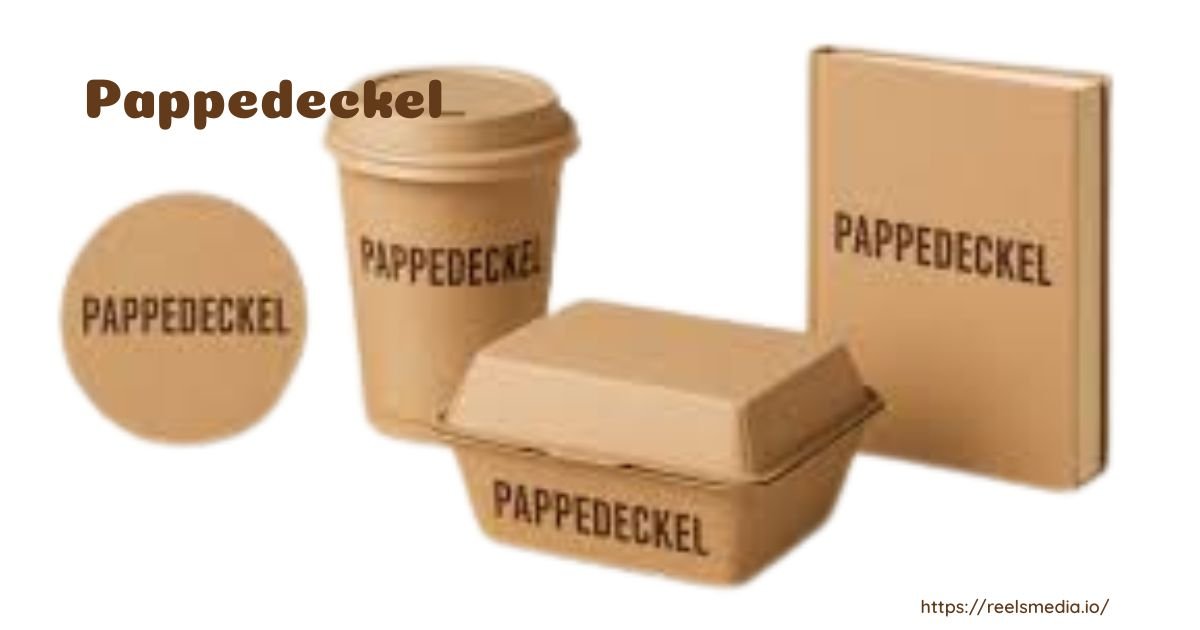When I first came across a pappedeckel, I thought it was just a simple cardboard lid, but soon I realized how eco-friendly, recyclable, and biodegradable it really is. In my opinion, this alternative to plastic shows how packaging can be both practical and responsible.
I have noticed pappedeckel used for food and beverages, from coffee cups to jars and containers in retail or household spaces. The wide applications and clear benefits make it stand out as a step toward sustainability in everyday life.
The history and origin of the word in Germany give it a special meaning with cultural significance. It feels good knowing this small piece links tradition with durability while solving modern challenges.
What is Pappedeckel
A pappedeckel is more than just a lid; it is a cardboard solution designed with eco-friendly ideas in mind. Unlike plastic, it is biodegradable, recyclable, and made to reduce waste while supporting sustainability in packaging.
In daily life, you can find on coffee cups, containers, and even jars, proving its applications stretch across food, beverages, retail, and household use. I find it impressive how such a small item can bring so many benefits to people and businesses alike.
Its origin ties back to Germany, where the history of the word connects with cultural values. For me, the meaning of pappedeckel is about balance — combining durability with a greener approach to living.
Benefits of Pappedeckel
The biggest advantage of a pappedeckel is its sustainability. Being eco-friendly, recyclable, compostable, and biodegradable, it reduces waste and supports a circular economy. I often feel proud using it because it aligns with my own greener living choices.
Another clear benefit is durability. With proper coatings, it offers moisture resistance, sometimes even waterproof qualities, making it practical for food and beverages. This effectiveness is why more businesses and consumers are adopting it.
On top of that, the chance for customization with branding, logos, designs, or even QR codes makes a marketing tool as well. It blends creativity with applications across retail, household, and industries.
Challenges with Pappedeckel
Despite its benefits, using pappedeckel can come with challenges. For example, achieving full waterproof quality or strong moisture resistance often requires special coatings and inks, which may raise cost.
Another challenge is consumer awareness. Many people are not yet fully informed about its sustainability or the environmental impact it can reduce. I’ve noticed friends sometimes reach for plastic simply out of habit.
Finally, adoption in certain industries is slow because of price comparisons, effectiveness, or lack of proper sustainability practices. But I believe these barriers will lessen as more innovations and technologies emerge.
Creative Uses of Pappedeckel
One of my favorite parts about its role in DIY and crafts. I’ve personally used them in creative projects, making decorative pieces for the home, which shows their true versatility.
Beyond decorative designs, many people transform into useful everyday items. With simple customization, it can become part of household solutions or branding strategies for small businesses.
The future is exciting, especially when smart packaging and technologies connect with pappedeckel. Imagine adding QR codes or modern designs that merge function with cultural significance.
Manufacturing and Materials
The manufacturing process of a pappedeckel often begins with recycled fibers. These are pressed and shaped into strong cardboard, sometimes finished with protective coatings to improve durability.
Inks and safety standards are also key parts of production, ensuring the final pappedeckel is safe for food and beverages. From my perspective, this attention to detail shows how sustainability can still deliver quality.
Every step, from process to materials, supports the bigger goal of waste reduction and lowering carbon footprint. This is why the environmental impact of a pappedeckel is much lighter than that of plastic.
Buying Guide
When buying a pappedeckel, I always look at prices, suppliers, and available options. Some even offer bulk discounts, making it cost-effective for businesses.
Checking designs, trends, and customization is also important. Many suppliers now allow logos, QR codes, and branding on pappedeckel, which adds marketing value.
In the end, choosing the right comes down to quality and fit for applications. Whether for coffee cups or containers, I’ve learned to balance effectiveness with sustainability.
Future of Pappedeckel
The future of pappedeckel is bright, shaped by innovations in smart packaging and new technologies. I believe its versatility will only grow as businesses seek better sustainability solutions.
It plays a big role in building a circular economy and driving carbon neutrality. More companies are looking at compostable and recyclable designs to lower their environmental footprint.
In my view, the future also includes stronger consumer awareness and deeper cultural significance, making pappedeckel not only practical but symbolic of greener living.
Important Points
A pappedeckel is a cardboard lid designed as an eco-friendly, biodegradable, and recyclable alternative to plastic in packaging.
Its uses include food, beverages, coffee cups, containers, and jars, showing clear applications in household, retail, and various industries.
The benefits involve durability, sustainability, customization, and branding, while the future highlights innovations, smart packaging, and the circular economy.
